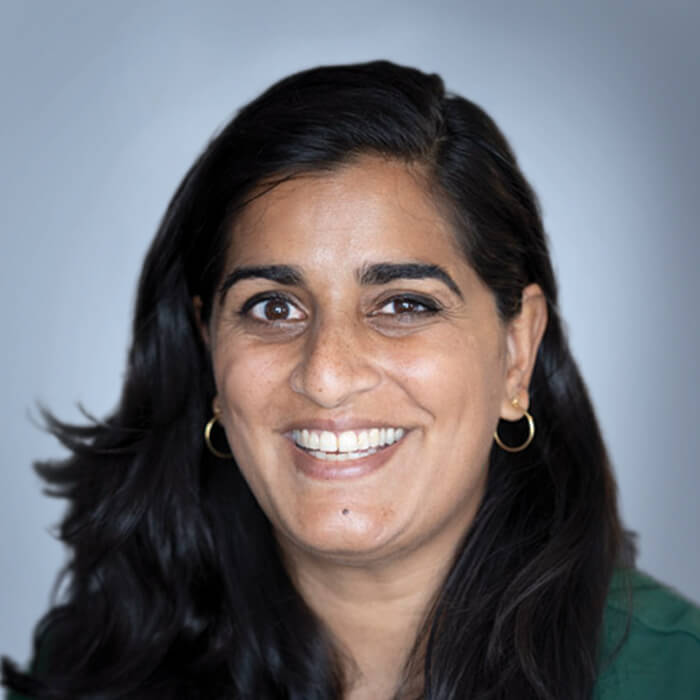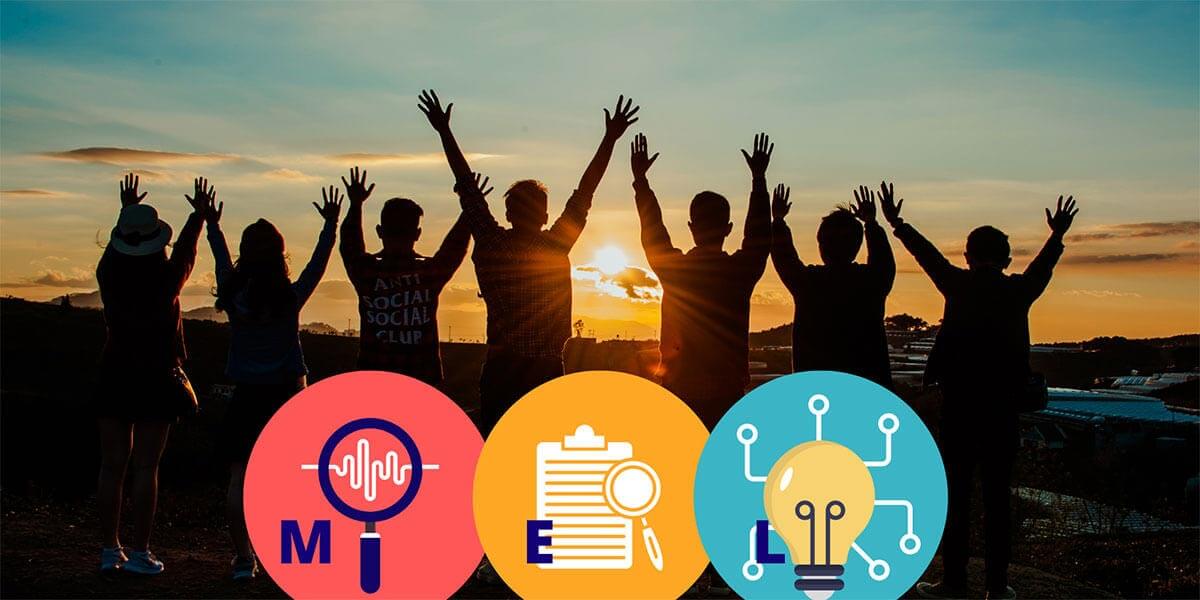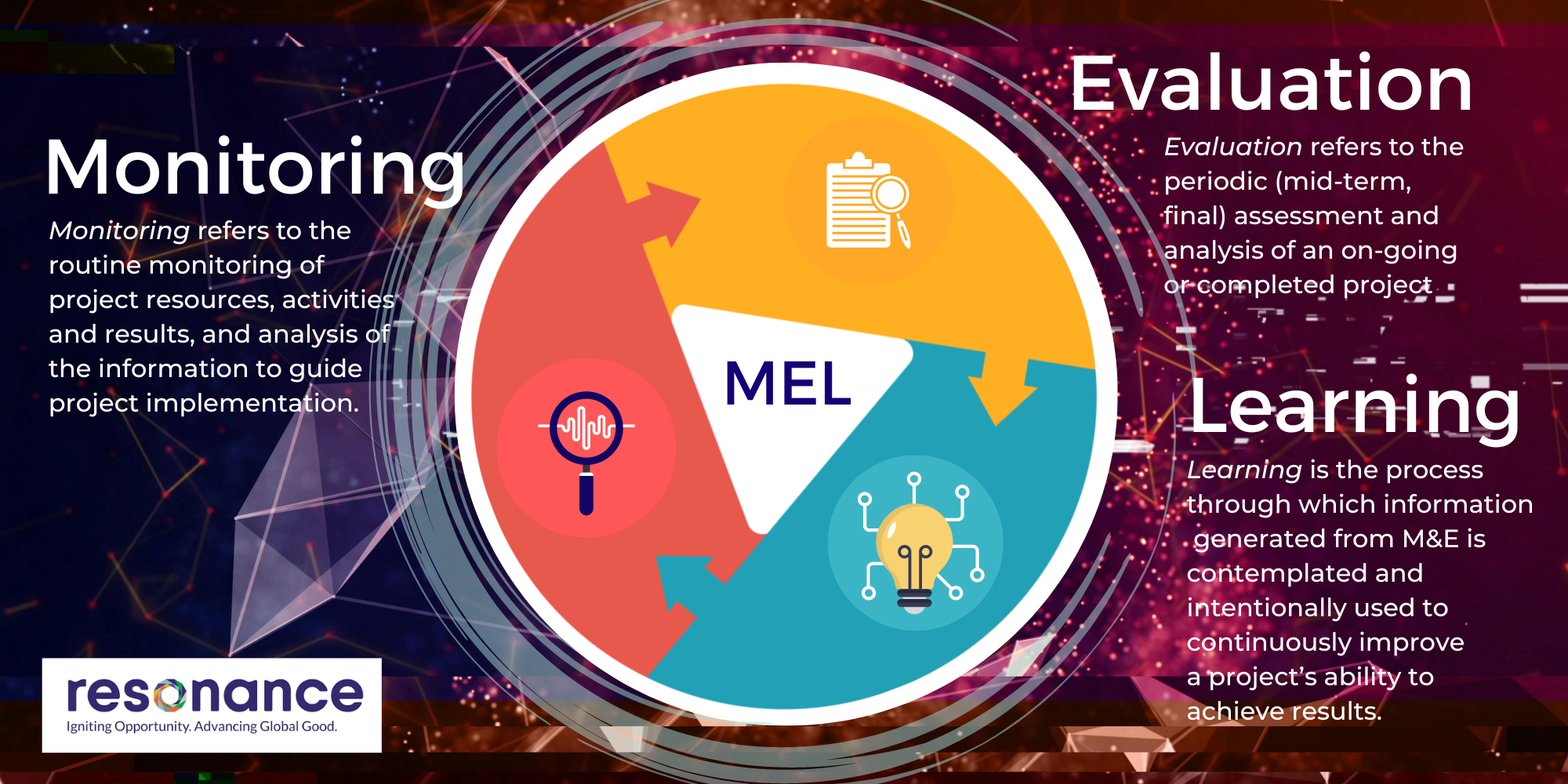The global community is facing increasingly complex and even 'wicked' social, economic, and environmental problems. Sustainability leaders from companies are working simultaneously on several goals and initiatives, often intersecting, such as Scope 3 emissions, biodiversity, and ESG roadmaps.
In parallel and sometimes in collaboration, catalyst organizations including USAID are supporting the implementation of partnerships and innovative activities on a broad-spectrum of challenges – from sustainable fisheries management, inclusive digital access, women’s empowerment, and Water Access, Sanitation, and Hygiene (WASH), among others.
As organizations and partnerships implement wide-ranging impact programs to address these challenges, internalizing processes that measure outcomes, track progress, and nurture agility to pivot in the face of unexpected obstacles and opportunities, is critical to success.
Monitoring, evaluation, and learning – also known as MEL – encompasses adaptable frameworks with processes, best practices, and tools that are strategically tailored for the uniqueness of organizations and sector-specific initiatives. Many government agencies, NGOs, and large multinational companies have in place robust and systemic MEL frameworks across their organizations and supply and values chains; others may use facets or components without calling it MEL explicitly.
At Resonance, MEL is one of our four stand-alone, yet integrative offerings that make up our continuously evolving Evidence For Transformation (E4T) service line. E4T also includes Data & Analytics, Knowledge Management, and Change Management, with each centering context-sensitive evidence and an array of systems and tools, to help organizations undertake rigorous analysis of efforts, make decisions, align outcomes to goals, improve programs, and drive change.
What is a MEL Framework?
It really depends. Organizations and aims differ, as do goals and initiatives. Therefore, MEL frameworks should be customizable to address specific needs and levels of complexity. Responsively, MEL is not a single process or system; rather, the toolkit we and other practitioners utilize is quite extensive. Predicting which tools are needed at the onset is nearly impossible, since a predetermined set of methods will not cover every case. Therefore, a critical first step in becoming more strategic around what a MEL framework should look like for a given organization is asking the question, “What do we need to know and understand in order to determine which methods and tools are likely to be useful in the specific complex interventions we are considering?”
At the core, MEL is a system or cycle with all three components, monitoring, evaluation, and learning, working in tandem and as a thread through all project and program phases – from early design through implementation and completion.
MEL helps organizations clarify intentions, collect crucial data to assess effectiveness toward impact goals, and monitor levers for change. Ideally, MEL processes should also include the realistic evaluation of capacity, internally and externally across the landscape, to respond and adapt with agility in real-time.
That is not to say you can’t integrate MEL into existing projects and programs.
As a continuously reinforcing and multiphase process, an effective MEL framework draws on user-centered design at multiple entry points. In addition, it bridges the gap between a development plan or impact program and the local environment—the people being impacted by an initiative. And that process should be ongoing.
At Resonance, our capabilities in MEL have been honed through our work with NGOs and agencies engaged in international development initiatives, as well as private sector companies working toward sustainable impact and engaged in cross sector partnerships.
Given this breadth of experience and depth of expertise, we cull and customize innovative tools and approaches for clients as part of our MEL design based on ongoing assessment and asking the right questions.
Here are the three components of MEL and the way they work ideally as a system.
[M] The Importance of Monitoring
Regardless of entry point into a project or initiative, ongoing monitoring is crucial.
The first step in collaborating with organizations on MEL design and integration is helping organizations think through and answer a wide range of questions that can be revisited across the duration of an initiative to gauge progress and even readjust.
Some foundational questions we prompt organizations to consider, and revisit iteratively include:
- What is the challenge, how do you define it, and who does it impact in terms of intended and unintended stakeholders? Has this challenge shifted or changed?
- What goals have you established or implemented to address that challenge, and are they (still) specific, realistically attainable, and measurable in a given timeframe?
- Do you anticipate the implementation of new processes and initiatives designed to meet those goals, and will they ultimately and unavoidably drive change within the organization? What does change look like in six months? A year? Two years? At the end of the initiative?
- And since leading and managing change is critical to success, how do you envision the links between these new activities to your goals? Who will benefit, who will be most impacted, how will it happen, and who will be responsible and involved?
By its nature, MEL compels organizations to become detail-orientated and specific. For example, Resonance has been working with a company consortium from The Sustainable Agriculture Initiative (SAI) platform—including leading multinational agribusinesses such as PepsiCo, Nestlé, and Ingredion—to build pre-competitive and cross-sector partnerships that advance sustainable agricultural supply chains in Pakistan.
In this case, it would be too vague to state as goals, “In five years, through this grant we’ll make that organization sustainable,” or “Through this one-day training program, farmers in Pakistan will transition their farms to regenerative agriculture.” These are too broad and are thus difficult to measure.
Instead, we want to get granular on the specific goals that an organization wants its program to achieve. Then we help our clients identify not only the “what” and “who” (such as recipients and beneficiaries), but also dedicated resources and timeframes.
This form of strategic mapping allows us to develop a robust and cohesive monitoring approach to ensure the impact program is on a path to success.
As private sector clients embark on more challenging sustainability commitments and other impact programs across their supply chains, MEL provides organizational change managers and leaders with tools to connect intended impact initiatives with other business outcomes.
Case in point. More recently, companies began tracking progress toward internal organizational goals and larger industry-specific, and sometimes, locational-specific metrics.
For instance, an agribusiness might have an internal goal to reduce carbon emissions throughout its supply chain by 40% as part of its organizational commitments, while also working toward improving a specific watershed in India that supplies water to many of its current growers and producers. Monitoring is critical to bridging both.
[E] Evaluation Should be Ongoing
Once an organization establishes what it needs to monitor, the focus then shifts to designing processes for collecting data for evaluation.
Whether an organization wants to address forest sustainability, improve access to clean water, or empower more women-owned businesses, we customize and adapt a menu of evaluation techniques—from participatory to experimental designs—based on an organization’s budget, objectives, and time.
For example, an international development agency may have a multi-year program to change the way children learn how to read or do math in Ghana. Thus, we might track hundreds of children and their progress over a five-year period to determine if the program is working.
By contrast, given the economic volatility of the private sector, a large multinational company might establish shorter-term, incremental projects tied to long-term goals, with fluctuating annual budgetary support as well. To address these parameters, we might design a robust but smaller-scale survey or track a dozen people over a year to collect their stories to see how—or if—any change is happening.
Although the evaluation techniques may change, the end-result is the same: Evaluation gives organizations an opportunity to regularly, and deeply, check in on how effective a program is. This ensures that money spent, and resources invested, will contribute to attaining desired outcomes.
[L] Learning is Key to Impact Longevity
We never collect data for the sake of it. We only collect data that we're going to use and center as part of a rich discussion.
This is learning.
For example, we might conduct a survey at the six-month mark for an NGO that is funding a development initiative aimed at reducing gender-based violence in Colombia.
We take the information we have collected to the team to provide a comprehensive picture. This would include foundationally:
- How the project is progressing
- Which activities have been completed and which remain unfinished, and
- Whether outcomes expected at this stage have been met, and which, if any, are still unattained.
If a project is off track, or if goals have not yet been met, we help an organization consider whether this direction is still worth pursuing, or whether adjustments need to be made.
Important in this process of learning, organizations are prompted through a series of questions to try to pinpoint and contextualize through their insights and expertise what they think might hindering successful goal attainment.
Questions drawn from creative problem solving, like, “Why; What’s Stopping You?” Ladder of Abstraction tool, or utilization of approaches like De Bono's Six Thinking Hats, may seem overly simplistic, but they challenge team to do a deep dive review as part of interval assessments.
After each, we then ask clients if they need or want to make changes to the implementation process or activities to improve the initiative.
Having worked with the international development community, government agencies, and the private sector for more than 20 years, we’ve learned this prompt and step in MEL is critical.
After all, the initial plan articulated by an organization is more often just the beginning, and rarely does any program go according to plan. The most successful impact programs are those that constantly adapt and adjust.
What Are The Measurable Benefits of MEL?
It is important to note that MEL is not about compliance (though certainly MEL can help clients design, monitor, and evaluate systems to help them attain compliance goals).
Rather, monitoring and evaluating the systemic data we collect enables organizations to continuously learn—this is what ultimately leads to progress and sustainable outcomes.
Resonance has developed and operationalized MEL plans, co-developed theories of change and results frameworks, and designed third-party evaluations across every technical sector in over 25 countries, including conflict zones and fragile states.
This includes recently working with USAID to transform the implementation of sustainable development projects worldwide as part of the Under the Management Excellence for Operations (MEO) IDIQ, for example.
We also completed in 2021 a phased monitoring and evaluation (M&E) initiative for the Department of State’s Bureau of Counterterrorism (DOS/CT), conducting real-time evaluations while simultaneously building the capacity of the Congressionally approved Counterterrorism Partnerships Fund (CTPF) to help foreign government partners more effectively counter terrorism and violent extremism.
 Currently, Resonance is completing a PepsiCo and USAID cross-sector partnership launched in 2020, Investing in Women to Strengthen Supply Chains Global Development Alliance (GDA), which builds the business case for women’s economic empowerment by expanding and elevating their influence in supply chain participation.
Currently, Resonance is completing a PepsiCo and USAID cross-sector partnership launched in 2020, Investing in Women to Strengthen Supply Chains Global Development Alliance (GDA), which builds the business case for women’s economic empowerment by expanding and elevating their influence in supply chain participation.
Given the diversity of client needs and initiatives in which we partner, MEL approaches are unique for each as well.
However, in our experience, we have identified several common wide-ranging and documentable benefits most organizations are likely to realize when integrating a MEL framework as part of developing and implementing commitment and project work.
8 Documentable Benefits of MEL Integration
- Enables stronger project design
- Leads to better outcomes and more effective programs
- Keeps programs on track to meet desired outcomes
- Ensures money and resources are spent efficiently and effectively
- Provides accurate data
- Creates opportunities for adaptive project management throughout implementation
- Gives beneficiaries and key stakeholders a voice
- Improves motivation and focus of people implementing the program
Organizations recognize that reporting on results is no longer enough. Success also means understanding what makes a program effective and continuously learning from what works—or doesn’t.
We believe that no program is complete without a MEL component to that end.
Is MEL the same Thing as Change Management?
This is an important question and distinction, and one we are continuing to work through internally with our teams and as part of deliberations and learning we are seeing across the MEL community.
Change management and MEL are not always mutually exclusive, though they may rely on completely different tools and toolboxes given the nature of diverse challenges; however, they are often complementary. With with large-scope initiatives where buy-in, championing, and institutionalization are requisite, MEL and change management may be inherently (and ideally) interdependent as a cohesive driver of more meaningful, long-lasting sustainable impact.
Practitioners and facilitators should be mindful of ways in which the components of MEL may be enhanced with the integration of a theory of change, for example; likewise, organizational changemakers should be attentive to the way tailored approaches to monitoring, evaluation, and the willingness to integrate learning for initiative improvement, can help build a case for change or innovation.
Internalizing MEL is Important
By its nature, an integrative MEL framework makes organizations more flexible and agile, and leads to adaptive project management. Internalizing MEL organizationally demonstrates a commitment to ongoing learning and process improvement with the aim of not only designing more effective initiatives in the future that drive lasting change, but also in delivering positive, sustainable impact for the benefit and prosperity of all stakeholders and local communities.
As a crucial offering in Resonance E4T services, our MEL solutions effectively balance fit and rigor. We have developed and operationalized MEL plans, co-developed theories of change, and designed evaluations and assessments across every technical sector across the globe. We build context-sensitive MEL systems that support real-time decision making, deploy device-based data collection for data quality, and incorporate technology, including AI, for rigorous analysis. Coupled with Change Management approaches, we can also help organizations institutionalize MEL as critically inherent across organizations.
Editor’s Note: This post has been updated for accuracy and current best practices.




